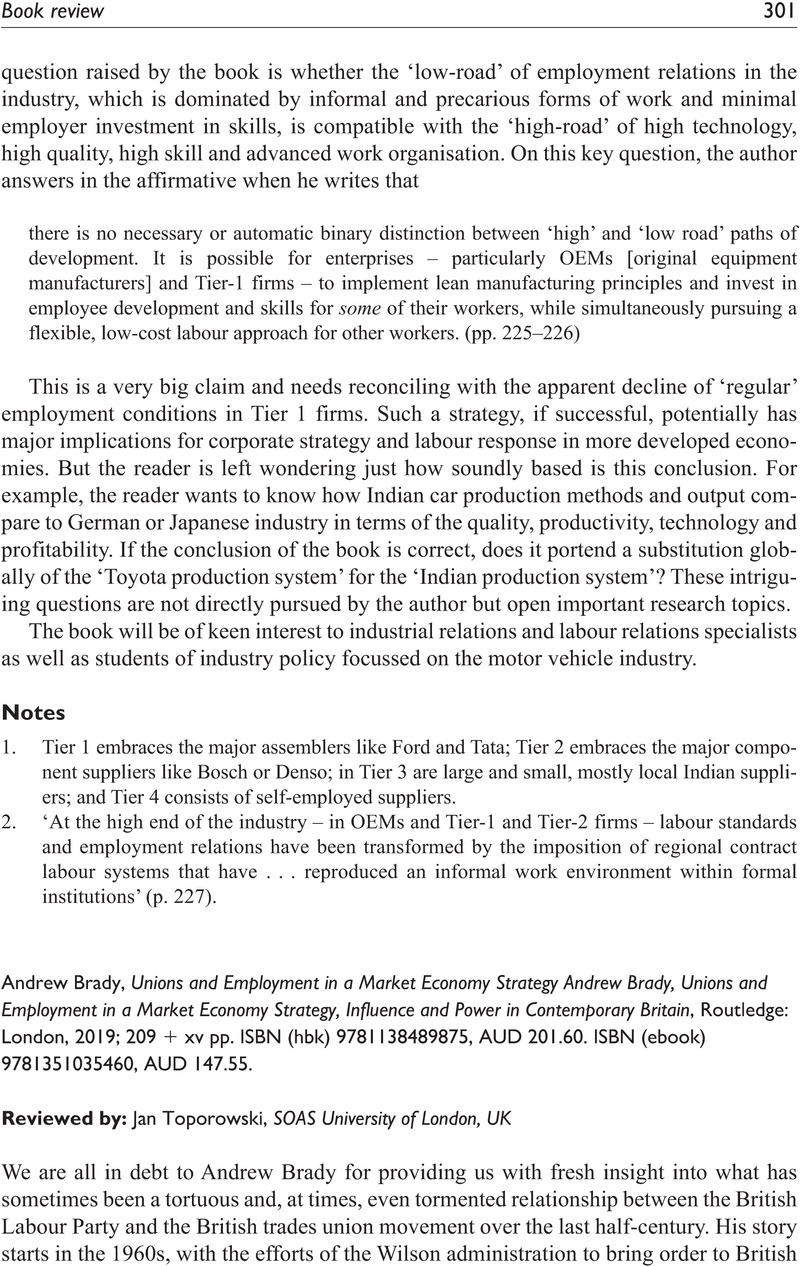No CrossRef data available.
Article contents
Andrew Brady, Unions and Employment in a Market Economy Strategy Andrew Brady, Unions and Employment in a Market Economy Strategy, Influence and Power in Contemporary Britain, Routledge: London, 2019; 209 + xv pp. ISBN (hbk) 9781138489875, AUD 201.60. ISBN (ebook) 9781351035460, AUD 147.55.
Review products
Andrew Brady, Unions and Employment in a Market Economy Strategy Andrew Brady, Unions and Employment in a Market Economy Strategy, Influence and Power in Contemporary Britain, Routledge: London, 2019; 209 + xv pp. ISBN (hbk) 9781138489875, AUD 201.60. ISBN (ebook) 9781351035460, AUD 147.55.
Published online by Cambridge University Press: 01 January 2023
Abstract
An abstract is not available for this content so a preview has been provided. Please use the Get access link above for information on how to access this content.

- Type
- Book reviews
- Information
- The Economic and Labour Relations Review , Volume 31 , Issue 2: Special Issue: Capitalism after Communism: Europe & the World 1989 - 2019 , June 2020 , pp. 301 - 304
- Copyright
- Copyright © The Author(s) 2020


